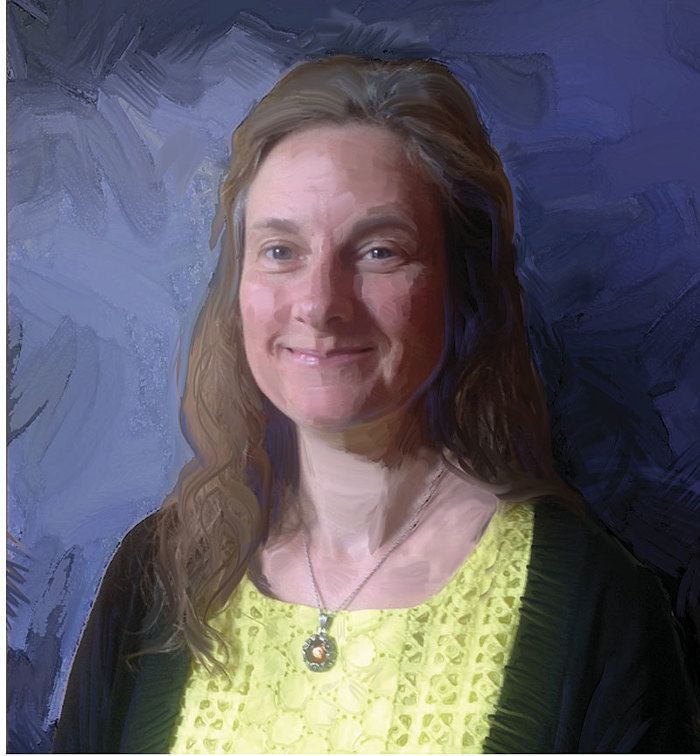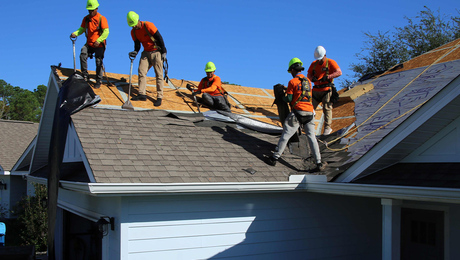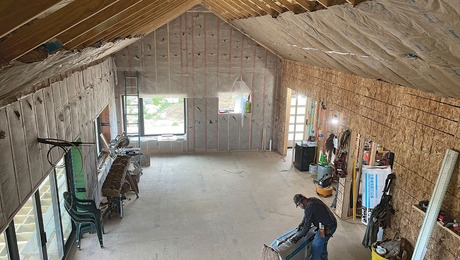Katrin Klingenberg, Passive House Pioneer
This architect is leading the movement for affordable energy-efficient homes in the United States.

What is a Passive House?
A Passive House is designed to use as little energy as possible and is built in accordance with five building-science principles: It has to have (1) continuous insulation without any thermal bridging, (2) an airtight envelope, (3) high-performance windows, (4) some sort of balanced heat-and-moisture-recovery ventilation, and (5) a minimal space-conditioning system. The concept was developed in the 1970s by North American building scientists and builders with funding from the U.S. Department of Energy and the Canadian government. The German Passivhaus Institut (PHI) studied that research extensively and adopted those same principles of building physics.
How did you get involved?
In 2000, I walked into a Passive House that was exhibited at the World Expo in Hannover, Germany. That’s when I decided to dedicate the rest of my career to designing only homes and buildings that would lessen the impact on the climate.
I returned home to Illinois and started designing and building my own house based on the Passive House principles, which I finished in 2003. I founded a nonprofit housing development organization shortly thereafter that offered Passive Houses to first-time homebuyers with limited incomes. I joined with builder Mike Kernagis to complete the first affordable Passive House in 2006.
In 2007, we decided to name the organization Passive House Institute US (PHIUS) to provide training and to create a professional designation of value: Certified Passive House Consultant (CPHC). Since 2008, we’ve trained over 1500 professionals in North America.
How does the European Passive House model differ from the U.S. model?
The original U.S. principles, developed by U.S. and Canadian researchers as a response to the oil embargo in the mid-1970s, had the exact same focus: continuous insulation, airtight construction, high-performance windows, modest passive-solar use, and heat-recovery ventilation. In addition, the U.S. scientists were very focused on the importance of hygrothermal performance of highly insulated envelope components so that condensation problems in wall assemblies would be avoided.
The initial energy metrics were very similar to the European numbers. In fact, the Europeans built much of their model on the North American model developed in the 1970s and ’80s.
Most of those original principles PHIUS agrees with. PHIUS disagrees with the scientific validity of applying one standard everywhere that was originally defined for central Europe. We also disagree with the claim that the European standard represents the cost optimum everywhere and with the notion that a static model based on monthly average climate data is precise enough to model more-challenging climates. We have more-powerful analysis tools now with much stronger computing powers, such as WUFI Passive, so why not evolve? Let’s not argue for a calculator over a computer.
Why doesn’t the European model work well in North America?
The original definition of a Passive House was a building that had a peak load for heating of 10w per square meter or 1w per square foot (which was the goal in the United States in 1975). In the climate zone for Darmstadt, Germany, that translates into an annual heating demand of approximately 15kwh per square meter per year for a town house. PHI concluded that the standard would work and be equally effective for all climates. It’s a powerfully attractive idea. But we’ve learned it’s also somewhat of a stretch, not just because of differences in climate but also because of differences in culture, technological advancement, availability of materials, and cost of energy, just to name a few. So many factors influence where the design optimum really lies. From a European vantage point—with limited climate variety—a single standard may be feasible. But in the United States, with many different climate zones, the chances that all of the factors that go into Passive House design will result magically in the same optimal design criterion everywhere are pretty slim.
How much has the divide between the European and U.S. Passive House camps affected the movement’s overall growth?
A lot. It was a really unfortunate thing. You can see a significant dip in the growth curve right after 2011, when the Passive House Institute severed ties with PHIUS. It created significant insecurity in the market among practitioners, manufacturers, lawmakers, and possible clients alike. It stalled projects and commitments of funding as people tried to figure out what was going on.
On the other hand, it has provided a freedom to challenge orthodoxy and to advance building science around Passive House building principles. Ultimately, I think that would have been necessary for Passive House to move beyond boutique adoption.
What’s the current state of Passive House in the United States?
The number of projects that we are certifying or that have been submitted for certification in our PHIUS+ program is growing exponentially. There are currently 100 certified homes. Single-family residential building was the initial focus, and now projects are getting bigger. PHIUS has certified four multifamily projects, with two more under construction, and over 20 more waiting to be certified. Commercial projects are gaining traction as well.
What has spurred that growth?
The increase in project certifications is partly related to the PHIUS+ certification program that we launched in 2012. It includes a rigorous design review, but it adds important components that the market has responded to. First, it produces an accurate HERS score, which is an aid in terms of marketing and creating financial incentives. Second, it includes an on-site quality-control and quality-assurance protocol, which is also an asset to designers. Finally, it includes some requirements that earn Challenge Home status (for residential projects) from the Department of Energy. PHIUS has an agreement with the DOE to co-promote the programs, and since 2012, PHIUS has appeared on the DOE website (energy.gov/eere/buildings/downloads/phius-information). That certainly has increased national exposure of the program. The endorsement by the DOE means a lot.
One critical thing we’ve noticed is that the regions where Passive House has grown the fastest have climates that are very similar to central Europe’s moderate climate. Climates that are either much colder or much hotter have not seen much uptake. This is due to the fact that the standard really should be climate specific and that one size does not fit all. PHIUS is currently involved in research as an industry partner with Building Science Corporation to come up with new Passive House standards by climate zone under the DOE’s Building America program.
What’s the best way to get more people to build energy-efficient houses?
I think targeted Passive House incentives provided by the government or utilities would go a long way. More-favorable conditions for financing ultra-energy-efficient homes also would be helpful. But maybe it’s not the energy savings. Maybe builders and architects need to do a better job of communicating the benefits of increased comfort and a healthy living environment to their clients. If builders and architects could get that across, who wouldn’t want a house like that if they had a choice? And then the energy savings would be icing on the cake.
Illustration: Jacqueline Rogers





















